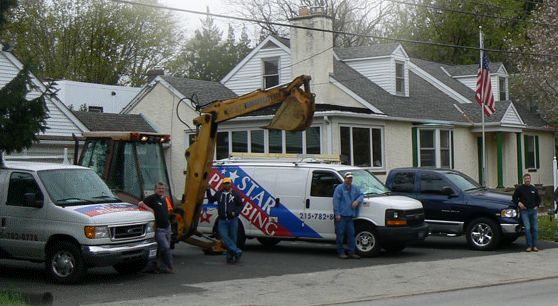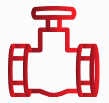How to Measure Plumb Accurately: A Step-By-Step Guide’
The plumb is a measurement of verticality or perpendicularity. It is used to ensure that a structure, such as a wall or column, is perfectly vertical and straight. Measuring plumb can be done with a variety of tools, including a bubble level, carpenter’s level, laser level, plumb bob, and even an app on your smartphone.
Each tool has its own pros and cons so it’s important to choose the right one for the job. Bubble levels are good for quick measurements but lack accuracy. Carpenter’s levels are more accurate but require more setup time. Laser levels offer high accuracy but are relatively expensive. Plumb bobs are simple to use but require some practice to master their use. Smartphone apps offer convenience and accuracy on the go but should not be used in lieu of other tools as they may not always provide reliable readings.
Plumbing
Plumbing is a system of pipes, fittings, valves, and fixtures installed in a building for the purpose of conveying liquids and gases from one location to another. It includes hot and cold water supply, drainage systems, and wastewater disposal. Plumbing is an important part of any building’s infrastructure for both residential and commercial applications. Knowing how to measure plumb is essential for any plumbing installation or repair job.
Types of Plumbing Materials
The most common materials used in plumbing are copper pipes, plastic pipes such as PVC or ABS, steel pipes, and cast iron pipes. Copper pipes are the preferred material for residential plumbing due to their resistance to corrosion and ability to handle high temperatures. Plastic pipes are generally used in commercial applications due to their light weight, low cost, and ease of installation. Steel pipe is often used in industrial applications due to its strength and durability. Cast iron pipe is primarily used for drainage systems due to its superior flow capacity and resistance to corrosion.
Uses of Plumbing
Plumbing is used in both residential and commercial buildings for a variety of purposes such as providing hot water for showers, baths, sinks, dishwashers; conveying wastewater away from the building; supplying gas appliances; supplying irrigation water; removing waste materials; regulating water pressure; providing an internal drainage system; providing external drainage systems; collecting rainwater; preventing flooding; controlling humidity levels in the building; maintaining temperature control in the building; protecting against backflow from sewer lines into the building’s drinking water system; cooling air conditioning systems by providing chilled water supply lines; as well as other uses.
Measuring Plumb
Measuring plumb accurately is essential for any plumbing installation or repair job. The most common ways of establishing a level line are using a level tool such as bubble level or laser level or using a reference line such as a chalk line or string line along with a plumb bob or spirit level. It’s also important to be able to identify uneven surfaces when measuring plumb so that adjustments can be made if necessary. When measuring plumb it’s important to ensure that all measurements are taken from the same point on each surface being measured so that they are all accurate relative to each other. This will ensure that any adjustments made will be correct relative to the other surfaces being measured.
How Do You Measure Plumb?
Plumbing is a complex job that requires precision and accuracy, and measuring plumb is an essential part of it. To ensure that a plumbing job is done properly, the right tools must be used to accurately measure the horizontal or vertical direction of objects. Below, we will discuss the specific tools and techniques used to measure plumb on plumbing projects.
Assessing The Horizontal or Vertical Direction of Objects
The most common way to assess the direction of an object is by using a spirit level. A spirit level is a device that contains a bubble that can be used to determine if something is perfectly level or not. It consists of two vials that are filled with liquid and bubbles in them. The bubble in the vial should be positioned in the centre when something is perfectly level. However, if it’s not in the centre, then it indicates that an object isn’t level by either being too high or too low.
Another tool commonly used for measuring plumb on plumbing projects is a carpenter’s square. A carpenter’s square has two arms with 90-degree angles at both ends, which makes it easier for measuring angles and straight lines on any project. It can be used to check for squareness between two points or for determining if something is vertical by placing one arm against an object and then checking if the angle between both arms are 90-degrees or not.
Choosing The Right Tool For The Job
When selecting tools for measuring plumb, it’s important to consider what type of project you’re working on as different tools may be needed depending on what type of work you’re doing. For instance, if you’re working on a major project such as building new walls or installing cabinets, then you’ll likely need specialty tools such as lasers levels to accurately measure plumb since they provide more precise measurements than traditional spirit levels.
On the other hand, if you’re doing smaller jobs such as hanging pictures or shelves then spirit levels may suffice since they’re much more affordable than laser levels and can still provide accurate measurements for small projects like these. It’s also important to note that there are many different types of spirit levels available so make sure you choose one that best suits your needs before beginning any project involving measurements of plumb lines.
Level Tools For Measuring Plumb
When measuring plumb in plumbing projects, there are two main types of tools used: water levels and laser levels. Water levels use a tube filled with water which has air bubbles inside it that indicate when something isn’t level by showing where the water rises above its starting point due to gravity pulling down on it when an object isn’t perfectly level horizontally or vertically. This makes water levels ideal for long-distance measurements since they don’t need to be held up against an object while taking measurements like other types of tools (such as spirit levels) do..
Laser levels are another type of tool commonly used for plumbing projects since they can quickly and accurately measure distances from one point to another without having to physically touch anything like traditional spirit levels do. Laser levels use lasers instead of bubble tubes filled with liquids so they are much more precise than traditional spirit levels which makes them ideal for larger projects where accuracy is key such as installing cabinets or putting up new walls in your home.. Additionally, laser levels come with adjustable settings so you can customize them depending on your specific needs making them very versatile tools for any project involving measuring plumb lines.
FAQ & Answers
Q: What is plumb?
A: Plumb is the vertical alignment of a line or surface. It is an essential measuring tool used in plumbing, construction, and carpentry work.
Q: What types of materials are used in plumbing?
A: Plumbing materials typically include different types of metal pipes, such as copper and galvanized steel, PVC pipes, and flexible connections. Other materials such as valves, fittings, and washers may be used as well.
Q: What are the uses of plumbing?
A: Plumbing is used to transport water from one area to another and connect it with fixtures such as sinks, toilets, showers, bathtubs and other appliances. It is also used for drainage systems for rainwater or wastewater.
Q: What methods can be used to establish a level line?
A: A level line can be established by using a ruler or other straight edge along with a spirit level or plumb bob. Another method is to use a laser level to project a horizontal line that can be followed along the surface being measured.
Q: What tools can I use to measure plumb?
A: Common tools for measuring plumb include water levels, laser levels and plumb bobs. Water levels use two glass tubes filled with colored liquid that indicate when two points are level with each other. Laser levels project beams of light that indicate when two points are level with each other. Plumb bobs consist of weighted lines that hang vertically when suspended from a fixed point.
In conclusion, measuring plumb is a critical skill for any plumber. It is essential to ensure that all plumbing fixtures and appliances are level and properly aligned. By using a spirit or bubble level, a plumber can easily check whether surfaces are plumb and make corrections if necessary. Additionally, the use of chalk lines can be used to check the alignment of pipes before they are secured in place. With the right tools and techniques, measuring plumb is an easy job for any experienced plumber.
Author Profile

-
Star Plumbing, located in Elkins Park, PA, is a full-service plumbing company owned and operated by Mitchell Gordon. Since its inception, Star Plumbing has been providing its customers with reliable, quality plumbing services.
The Star Plumbing website offers informative articles on DIY plumbing and plumbing equipment, offering readers helpful advice and tips on how to take care of their own plumbing needs. This is a great resource for those who are looking to tackle a plumbing project themselves, as it provides useful information and advice on how to safely and successfully complete a plumbing job. Additionally, the website provides detailed descriptions of the various plumbing tools and equipment that are available, as well as detailed instructions on how to use them.
Star Plumbing’s website is a great resource for anyone with plumbing needs. Whether a customer is looking for advice on how to take care of their own plumbing or to schedule service from Star Plumbing, the website offers helpful advice and information for all their plumbing needs.
Latest entries
- April 12, 2024Plumbing Equipment And AccesoriesI Tested And Ranked The Best 10 Inch Rough In Round Toilet: And Here’s What I Found
- April 12, 2024Plumbing Equipment And AccesoriesI Tested And Ranked The Best Stone That Cleans Toilets: And Here’s What I Found
- April 12, 2024Plumbing Equipment And AccesoriesI Tested And Ranked The Best Heat Tape For Plumbing: And Here’s What I Found
- April 12, 2024Plumbing Equipment And AccesoriesI Tested And Ranked The Best Kaboom Toilet Bowl Tablets: And Here’s What I Found
